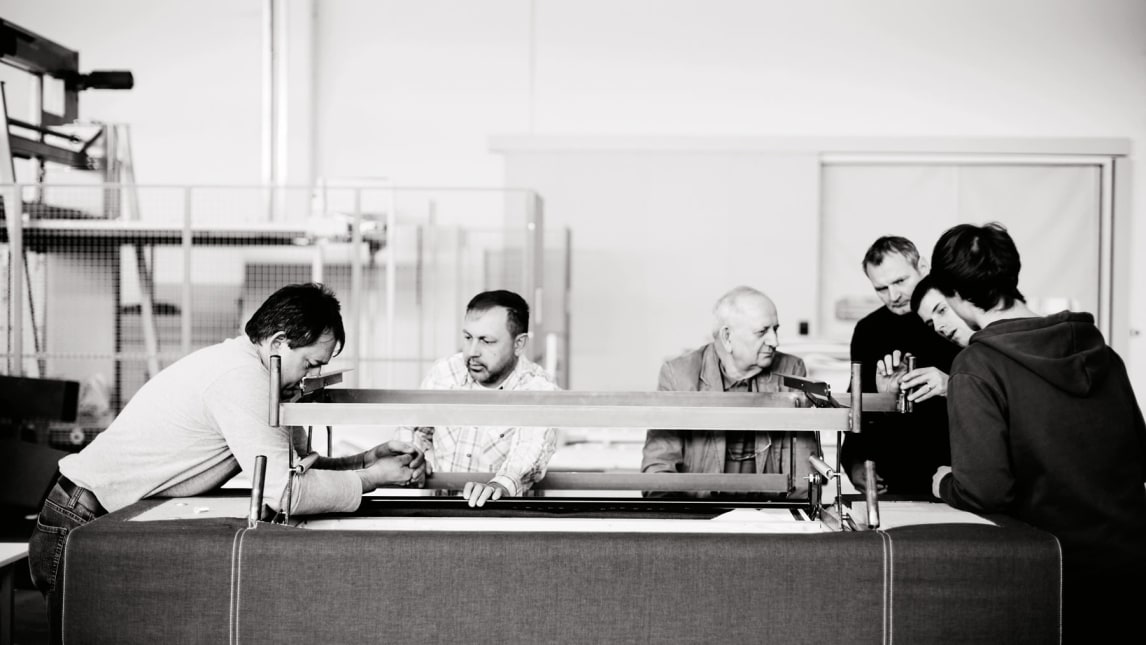Category: Exhibitions
NOTICE ON THE RESULTS OF THE international, public, visual arts competition THE VICTIM OF VUKOVAR 1991
INVESTOR AND TENDERER of the competition is:
Ministry of Croatian Veterans’ Affairs, 1 Trg Nevenke Topalušić, 10 000 Zagreb,
OIB (PIN): 95131524528, Phone: 01/2308-833, 01/2308-524, Fax: 01/2308-894
Website: www.branitelji.hr
Person responsible: Tomo Medved, Deputy Prime Minister and Veterans’ Affairs Minister
Institution in charge of ORGANISING and IMPLEMENTING the competition:
Croatian Association of Artists – HDLU (hereinafter: the Implementing Body), 16 Trg žrtava fašizma, 10 000 Zagreb,
OIB (PIN): 89246742324, Tel: 01/ 4611- 818
Website: www.hdlu.hr
Person responsible je: Tomislav Buntak, President
TYPE OF COMPETITION: international, public, in the field of visual arts
SUBJECT AND PURPOSE OF THE COMPETITION:
The aim of the international visual arts competition The Victim of Vukovar 1991 is to establish a dialogue with contemporary art practices based on the culture of memory and symbolism of war suffering of the city of Vukovar and generate artworks that will be inscribed in collective memory. The competition was looking for four new works of art that had never been presented to the public.
EVALUATION AND DECISION-MAKING CRITERIA:
In addition to the compliance of the works with the conditions of the competition (in terms of the content, deadlines and mandatory attachments), when evaluating the works, the Jury considered the following:
- artistic excellence of the work;
- research approach in the context of the culture of remembrance and symbolic value in commemorating historical trauma;
- recognizability and clarity of the artistic expression and media poetics;
- artist’s references.
JURY:
- Branko Franceschi, art historian
- Kristijan Milić, film director
- Božica Dea Matasić, full professor of arts
- Tomislav Buntak, associate professor of arts
- Ana Holjevac Tuković, PhD in History
- Alen Novoselec, associate professor of arts
- Ivanka Bušić, mag.soc.
Advisor:
- Ruža Marić, Director of the Vukovar Municipal Museum
SELECTION:
- A-létheia, sound spatial installation
Artists: Ida Blažičko and Alex Brajković
- Vukovar in Situ, photograph
Artist: Vjeran Hrpka
- Slušatelj (Listener), spatial installation
Artist: Vladimir Novak
- Fragmenti (Fragments), painting
Artist: Stjepan Šandrk
EXHIBITION OF COMPETITION WORKS:
The competition works will be exhibited in the National and University Library, 4 Ul. Hrvatske Bratske Zajednice in Zagreb. The exhibition opening will be held on 17 November 2021.
Visita Interiora Terrae: Myth and Alchemy as Art Practice
Prsten Gallery
August 27 – September 16, 2021
Tomislav Buntak, Manolo Cocho, Frnacisco Fernández Taka, Kristian Kožul,
Mia Maraković, Leonardo Martínez, Antonio del Rivera, MarkoTadić
Kustosi: Manolo Cocho, Maja Flajsig and Josip Zanki

The project Visita Interiora Terrae: Myth and Alchemy as Art Practice is based on the works of Croatian and Mexican contemporary artists who question and redefine the ideas of manifestation of the sacred – hierophany. The artworks deal with the fact that an ordinary space can be transcended into a sacred one and that ordinary, material objects can be transformed into works of art. The artists appropriate everyday objects, create new works (or show the existing ones) using the alchemical process of achieving the Philosopher’s Stone. The Stone embodies and transcends the infinite field of time and space, as well as the possibility for the works of art to become or be in simultaneity with the same. Through their work, the artists develop an awareness of material objects, metamorphosis and the forms of transformation of the world of appearances into the world without forms. The project aims to open up the spaces of artistic limitations and expand the field of discussion to the ontological status of objects and events as part of the sacral.
The curators of the project, Manolo Cocho, Maja Flajsig and Josip Zanki, have selected artworks rooted in interdisciplinary research; focused on the issues of establishing a relationship between contemporary art and sacred space, where sacred space is a place that enables the realization of rituals (the process of achieving the Stone) and the experience of reliving myth. The exhibited works touch upon the leitmotif that forms the outline of myth and alchemy, exploring the limits and possibilities of liberation from the positivist mind and the pragmatic world. The project is conceived in two parts, in Zagreb and Mexico City. The first part of the project consists of the eponymous exhibition at the Prsten Gallery of the Croatian Association of Artists from 27 August to 16 September and an academic conference at the Academy of Fine Arts, University of Zagreb on 2 September 2021. The exhibition will feature the works of Marko Tadić, Kristian Kožul, Mia Maraković, Tomislav Buntak, Manolo Cocho, Francisco Fernández Taka, Leonardo Martínez and Antonio del Rivera. The academic conference will feature the works of Maja Flajsig and Josip Zanki, Miguel Vassallo, Ana Ortiz Sánchez Renero and Rodrigo Fernández de Gortari. The project is supported by the Ministry of Culture and Media of the Republic of Croatia, Centro de las Artes de San Luis Potosí, Kronal, Aurora Co-Lab and Centro de Ciencias de la Complejidad.
Visita Interiora Terrae – predgovor – Maja Flajsig i Josip Zanki
MY+H ”vista interiora” – Manolo Choco, Josip Zanki
















